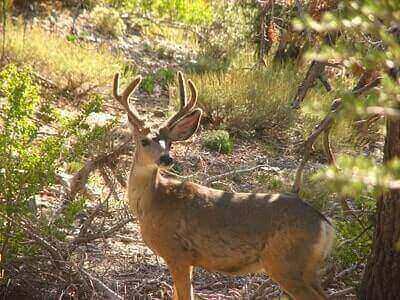Disclosure: We may earn commissions if you purchase products after clicking on a link from our site.
Do you want to know how to scout the hunting ground? Do you want to hunt a new piece of land? Scouting a new plot of land can sometimes be overwhelming. In this article, we will discuss how to scout the hunting ground. It is our goal to give you the information you need to scout the hunting ground confidently.
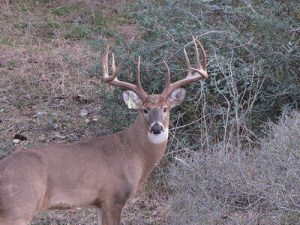
How To Scout The Hunting Ground
1. E-Scout
Take advantage of technology before stepping foot on the plot of land. Locate the hunting ground online and study it extensively. Study typography and look for possible bedding areas, food sources, water sources, funnels, creek crossings, swamps, farmlands, etc.
Google Earth can also be used to study the area. Look for any major roads, parking areas, walking trails, and access points close to the hunting ground. If they are nearby, that may not be a good ground for hunting. You can also use hunting apps like HuntStand and onX to learn and document your findings.
2. Early Morning & Late Afternoon
Scouting during the early morning and late afternoon can be incredibly advantageous for hunters preparing for their expeditions. During these times, wildlife activity tends to be at its peak, as many animals, including deer and other game species, are most active during the low-light hours surrounding dawn and dusk, known as the “golden hours.”
By venturing out during these periods, hunters can observe animal movements, feeding patterns, and preferred travel routes more effectively. Additionally, the cooler temperatures during these times often result in reduced human activity, minimizing disturbances to wildlife and increasing the likelihood of encountering animals in their natural habitats.
Furthermore, the soft, diffused lighting conditions during sunrise and sunset can enhance visibility and make it easier for hunters to spot tracks, bedding areas, and other signs of animal presence. Overall, scouting during the early morning and late afternoon provides hunters with invaluable insights that can significantly improve their chances of success when hunting.
3. Funnels
When scouting a hunting ground, one effective strategy is to search for natural bottlenecks or funnels where wildlife activity is concentrated. Funnels are areas where terrain features, such as ridges, streams, or dense vegetation, funnel animals into specific pathways as they travel.
These natural corridors create choke points that funnel wildlife movement, making them prime locations for hunters to set up ambushes or stands. By identifying funnels during scouting, hunters can anticipate where game animals are likely to pass through, increasing their chances of encountering deer, elk, or other desired species.
Additionally, funnels often indicate transitions between different habitat types, such as between bedding areas and feeding grounds, providing valuable insights into animal behavior and movement patterns. Overall, recognizing and scouting funnels can be a key strategy for hunters seeking to maximize their success in the field.
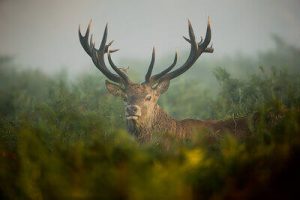
4. Transition Lines
When scouting a hunting ground, it’s crucial to search for transition lines, which are boundaries or edges between different types of habitat. These transition zones can be highly productive areas for hunting as they attract and concentrate wildlife movement.
Animals often use these transition lines as travel routes between feeding, bedding, and watering areas, making them prime locations for encounters with deer, elk, or other game species. Examples of transition lines include the edge of a field meeting a wooded area, the border between thick cover and open terrain, or the junction of different types of vegetation.
By identifying and scouting these transition lines, hunters can strategically position themselves along these natural corridors to intercept game as they move between habitats. Transition lines provide valuable opportunities for hunters to observe and understand animal behavior, increasing their chances of a successful hunt.
5. Swamps & Marshes
When scouting a hunting ground, swamps and marshes are important areas to explore. These wetland habitats often support diverse wildlife populations, including waterfowl, deer, and other game species.
Swamps and marshes provide critical resources such as water, food, and cover, making them attractive locations for various animals throughout the year. Waterfowl, in particular, are drawn to these areas for nesting, feeding, and resting, especially during migration seasons.
Additionally, deer and other mammals may utilize the edges of swamps and marshes for bedding and traveling between different habitats. By scouting these wetland areas, hunters can identify potential hunting spots, set up blinds or stands near game trails or feeding areas, and plan their hunting strategies accordingly.
However, navigating through swamps and marshes can be challenging, requiring appropriate gear and precautions to ensure safety and minimize disturbance to wildlife and their habitats.
6. Set Up Trail Cameras
Setting up trail cameras is a crucial step when scouting a hunting ground. These cameras provide valuable insights into wildlife activity, helping hunters identify game patterns, determine population densities, and assess the quality of potential hunting spots.
When setting up trail cameras, it’s essential to choose strategic locations such as game trails, feeding areas, water sources, or pinch points where animals are likely to pass. Placing the cameras at the right height and angle ensures optimal coverage and reduces the risk of false triggers.
Additionally, hunters should consider factors like sun direction, background clutter, and proximity to human activity to maximize camera effectiveness. Regularly checking and adjusting trail cameras allows hunters to gather continuous data, monitor changes in animal behavior, and refine their hunting strategies accordingly.
Overall, trail cameras serve as invaluable tools for hunters, providing valuable reconnaissance and enhancing their chances of success in the field. You can read an article on the best trail camera tips from this link.
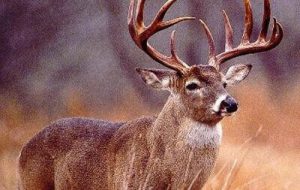
7. Local Wildlife Biologist
When scouting a hunting ground, one valuable resource that hunters should tap into is the expertise of local wildlife biologists. These professionals possess in-depth knowledge of the area’s wildlife population, behavior, and habitat preferences.
By engaging with wildlife biologists, hunters can gain valuable insights into the specific habits and movements of game species, as well as any environmental factors that may impact their behavior. Wildlife biologists can also provide information on population trends, hunting regulations, and conservation efforts, helping hunters make informed decisions and ensure sustainable hunting practices.
Additionally, collaborating with biologists fosters a greater understanding of the ecosystem and promotes conservation efforts, contributing to the long-term health and vitality of the hunting ground. Overall, consulting with local wildlife biologists is an essential step in scouting, enabling hunters to enhance their knowledge, improve their hunting strategies, and responsibly enjoy the pursuit of game.
8. Food & Water Sources
When scouting a hunting ground, one crucial aspect that hunters should focus on is locating food and water sources. Understanding the natural food and water availability in the area is key to identifying where game animals are likely to congregate.
Food sources such as acorns, fruits, crops, and browse are attractive to deer, elk, and other herbivores, while water sources such as streams, ponds, and waterholes serve as essential watering spots for wildlife, especially during dry seasons. By identifying these key resources, hunters can strategically position themselves near these areas to increase their chances of encountering game animals.
Additionally, monitoring food plots, agricultural fields, and natural vegetation can provide valuable insights into animal movements and feeding patterns. Ultimately, scouting for food and water sources plays a vital role in formulating effective hunting strategies and maximizing hunting success in the chosen hunting ground. We did a review of the best spotting scopes that you can read if you are interested in spotting scopes.
9. Bedding Areas
When scouting a hunting ground, it’s essential to pay attention to bedding areas, as they offer valuable insights into the habits and movements of game animals. Bedding areas are locations where animals such as deer, elk, and other ungulates rest and seek shelter during the day.
These areas are often characterized by thick cover, such as dense vegetation, tall grass, or brush, providing concealment and protection from predators. By identifying bedding areas, hunters can gain a deeper understanding of the daily routines and preferred habitats of game animals. They can then use this information to strategically position themselves along travel routes between bedding areas and feeding grounds or to set up ambush sites near these resting spots.
Additionally, scouting bedding areas allows hunters to avoid disturbing these crucial sanctuaries, thereby minimizing stress on the local wildlife population and increasing the likelihood of encountering game animals during hunting expeditions.
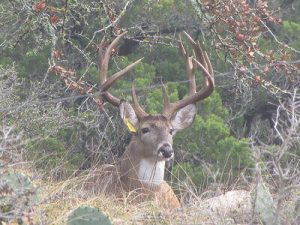
10. Study The Wind Direction
When scouting a hunting ground, studying the wind direction is paramount for a successful hunt. Wind direction plays a crucial role in determining how animals perceive and detect human presence through scent.
By understanding prevailing wind patterns in the area, hunters can strategically position themselves downwind of game trails or bedding areas, minimizing the risk of their scent spooking potential targets.
Additionally, analyzing wind direction helps hunters select suitable stand or blind locations, ensuring that they remain undetected while awaiting their prey. Tools such as wind indicators or apps can aid hunters in assessing wind conditions accurately and adjusting their tactics accordingly.
Ultimately, mastering the art of reading the wind enhances a hunter’s ability to approach and engage game animals effectively, increasing their chances of a successful harvest. This positioning allows them to smell and see danger approaching. www.windfinder.com can give you the wind direction in an area.
11. Expect Changes
Being flexible and open to changes is crucial when scouting a hunting ground. While hunters meticulously gather information about the terrain, game patterns, and environmental conditions, it’s essential to recognize that nature is dynamic and unpredictable.
Factors such as weather fluctuations, wildlife behavior, and human activities can influence the accuracy of the data collected. Therefore, hunters must adapt their plans and expectations accordingly. By remaining flexible, hunters can seize opportunities that arise unexpectedly, such as adjusting their hunting strategy based on real-time observations or shifting to alternative locations if initial scouting results prove ineffective.
Additionally, being open to changes fosters resilience and creativity, enabling hunters to overcome challenges and optimize their hunting experience. Ultimately, embracing flexibility allows hunters to navigate the uncertainties of the wilderness more effectively, increasing their chances of a successful and rewarding hunt. A review of the best climbing treestands was discussed in an article that you can read from this link.
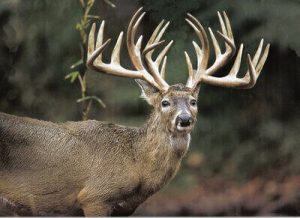
The Bottom Line
Learning how to scout the hunting ground can prove to be very important before the hunting season begins. The information you gather can help you have a successful hunting season. In this article, we discuss how to scout the hunting ground to have a rewarding hunting season. You can also read how to scout for deer, how to scout for ducks, how to hunt whitetail deer during the rut, and how to scout turkeys.
